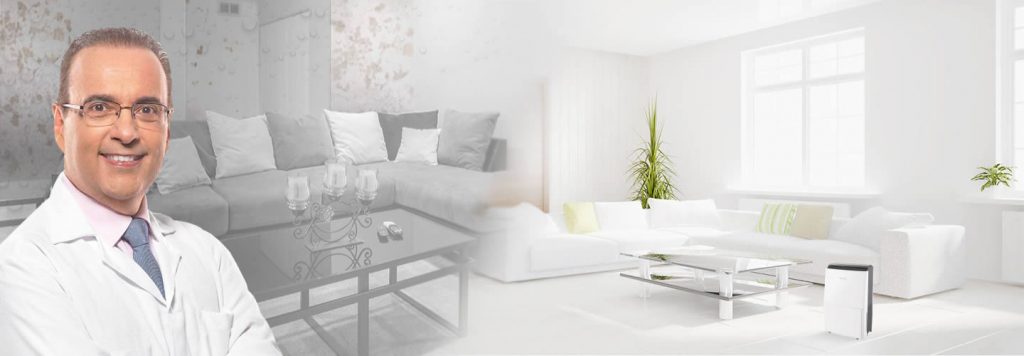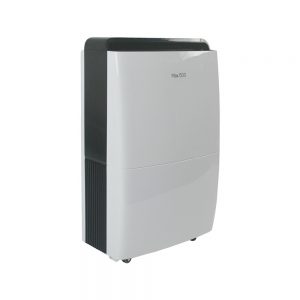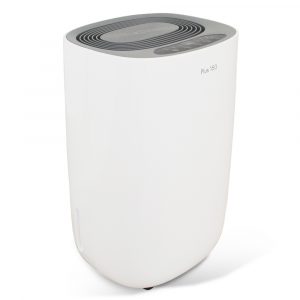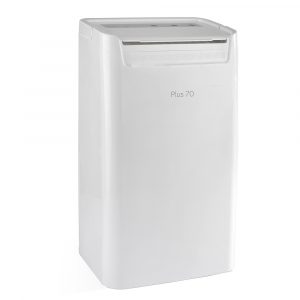
How many times we have heard this phrase from our grandparents: Open the windows to air the bedrooms. More airy places are healthier.
Actually what they meant is that airy places represented less relative humidity sites. With the passage of time, these ideas have been misinterpreted, as it was thought (and some people still think) that the drier the environment, the worse for people who are allergic (rhinitis, asthma). They were placing humidifiers in the rooms, basins with water, wet towels, creating an Amazonian atmosphere in the child´s room, they thought that at night they would become a fern and that they would absorb the environmental humidity. In fact, this humidity (above 70%) created an environment conductive to the main responsible for allergic, processes, e.g, mold and mites.
Outside house the environment must be moist because the drier the outside environment, the more pollen, dust, dirt, pollution, chemicals and other materials that causes allergic processes will be in suspension, easily reaching humans, causing asthma, rhinitis, dermatitis among other clinical processes. How many times have we heard: it needs to rain to clean the air and reduce pollution – this is true!
However, this truth is not applied to our homes. Inside them the ideal is to maintain between 50 and 60% relative humidity. In domestic dust we find fabric fibers, human skin scales, food particles, as well as bacteria, fungi, other germs and mites. This forms a cocktail that will trigger allergic processes (asthma, Rhinitis and dermatitis) in susceptible people.
Let´s each one of them introduce themselves.
Mold
Hello…How are you?
My name is Mold. I am a representative of separated kingdom, neither animal nor vegetable, a differentiated kingdom called Fungi. There are many relatives of mine who deteriorate various types of materials and products like wood, fruits, etc…
I am not very demanding for my development: by having a place with environmental humidity above 70%, poorly ventilated and hot, I am beginning to grow. My development is through filaments called Hyphae that penetrate the place I am growing and feed them. When the Hyphae join, they form Mycelia that can also give allergic responses. I have a great need to multiply and the way I do it is similar to plant seedlings, but I call it spores. When I multiply, I form such a large amount of spores that they give a special coloration, green, blue, black, dark green, violet among many other colors. I give an appearance of thick dust in the places, be it fruit, wood or wall. With the movement, which can be a gust of Wind, a cloth, a furniture dragged, my spores go to the air and in each place that fall can give rise to new growths of molds, because as I said, it is enough that the humidity conditions are favorable. The amount of spores is so great in the environment that many of them fall on beds, mattresses, pillows, people, animals, that is, everything in this environment. When inhaled, these spores can lead to Rhinitis, conjunctivitis and asthma. From 5 to 10% of the population is allergic to mold. The main symptoms that they cause are: Allergic Rhinitis (itchy nose, sneezing, nasal clogging or coryza), Asthma (coughing, wheezing, shortness of breath and tightness in chest).
Now, what could people do to prevent my growth or appearance? It would do everything contrary to my basic necessities, especially the environmental humidity, that is, to eliminate leaks, to remove with fungicides the mold of visible surfaces, good maintenance and cleaning of the air conditioning, maintenance of good lightning and local ventilation. In addition, use mattress covers and pillows that are impermeables on the inside and cotton on the outside and of course zippered (like a bag). Move clothes that are stored for a long period time, washing and drying very well before storing them again. Avoid placing in the environment humidifiers that produce steam and increase the humidity too much, as well as avoid leaving wet towels (forgotten or placed purposely) in the environment and, in principle, use Desidrat dehumidifiers. This equipment is my biggest public enemy because they control the humidity of the indoor environment within a range of 50 to 60% and this far less than the values that I need to develop myself, which is above 70%.
In the next chapters we will let other allergenic agents introduce themselves and tell us the secrets of their controls.
MINI BIOGRAPHY:

Mr. Roberto Martins Figueiredo “Dr. Bactéria”
Graduated in biomedicine, with specialization in public health and marketing by FGV, in quality engineering, process control and quality audits (by Poli USP), today, “Dr. Bacteria” is the Technical Director of Microbiotechnics (enviromental hygiene advisory center and advisory on laboratory analysis).



